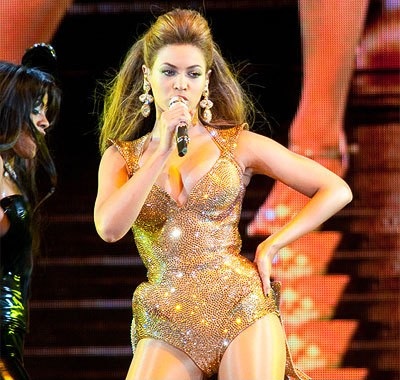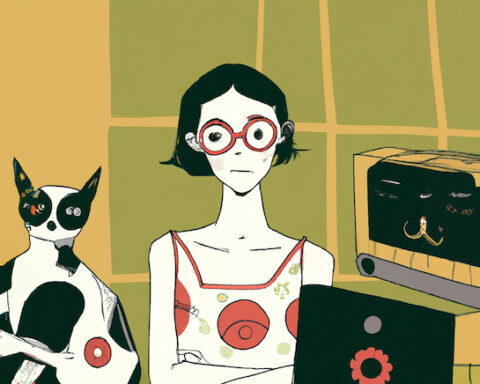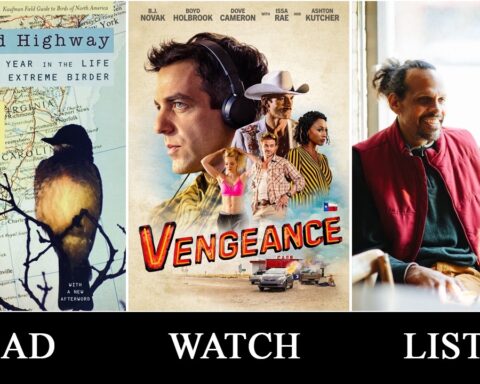For young composers, composition contests are a source of constant joy and disappointment. Although they present opportunities for our work to be presented at a high level, many contests have specific parameters in orchestration and eligibility that make it hard to find the right ones. Recently I’ve been seeing a new type of composition contest, those that are specifically designed for composers of color or from underrepresented communities. On the surface, these opportunities seem great. But every time I apply, I think about how performative it all feels, and how interactions between people of color and the music industry at large have always been awkward, at best, and prohibitive, at worst. As a classical music student in Atlanta, a diverse and progressive city, I’ve been fortunate to be spared from the most blatant forms of racism and prejudice; I have never been the victim of a hate crime or been called a racial slur. However, there is a degree of imposter syndrome that has permeated my experience as an artist, as if any path that I choose is somehow betraying an aspect of my identity. Prejudice in the music industry is still an ongoing crisis, and it’s something I’ve long wanted to dive into deeper.
For the purposes of this article, when I refer to person/people of color (POC), this indicates those of black, Hispanic, Latin, and South and East Asian descent, as well as First Nations, and any other minority who has not been seen in the United States as “white,” historically and today.
An unavoidable reality for artists of color is that the fields of classical music, opera, and musical theatre are historically and overwhelmingly dominated by white men and women. Take a moment and think really deeply to see if you can name five incredibly successful people of color in any of those fields; you can probably do it, but it will take you longer than you would think. The consequence of this lack of representation is that many young POC who are interested in studying classical music spend much of their time being the only POC in a room; being in that position is hard to explain to someone who has never experienced it. Many artists of color like myself can’t shake the feeling of having something to prove, as if we carry the burden of our entire race on our shoulders throughout every rehearsal. We also very rarely see ourselves represented on the stage. The talents of George Walker, Anthony Davis, Jessye Norman, Leontyne Price, Audra McDonald, and Lin Manuel-Miranda are once-in-a-generation, and history has no shortage of stories about how hard it was for people like them to achieve success. Being a POC in the musical and performing arts also means constantly being put into a box labeled by the type of music in which POC should presumably be invested. Often-times, expectations are put on us that are not put on our white counterparts: actors and singers have limited access to roles and composers come up against limitations on subject matter. Although there exist many works of art specifically conceived of by and for performers of color, works like Porgy and Bess or Hamilton are lightning in a bottle.

I have seen the ramifications of this lack of representation throughout every level of my education. My high school was very diverse, and about 50% of the musicians in my youth orchestra were people of color; at Georgia State University, the school I currently attend, that number is down to about 30-40%. Yet “less than 2% of musicians in American orchestras are African American, and only 4% of orchestral conductors are black.”[1] While it is true, of course, that not every music student wants to pursue music as a career, what these shockingly low percentages demonstrate to me is that on a large scale, overtime, talented musicians of color continuously feel out of place in classical music settings, and once that tension becomes too much, they have no choice but to leave and find more inclusive outlets. The intersection of race and class is also an important factor in this turnover; my parents and the parents of many of my peers of color actively discouraged us from pursuing careers in music due to the financial limitations of careers in the arts. What makes this exodus especially tragic is that so many people of color are deeply passionate fans of classical music; one of my favorite stories is of how Martin Luther King, Jr. famously listened to Donizetti’s “Lucia di Lammermoor” while on the drive to Montgomery, Alabama to stage one of his many famous civil rights demonstrations.[2] Throughout my formal education, I have always been amazed at how people of color can love styles of music by which they are never truly represented.
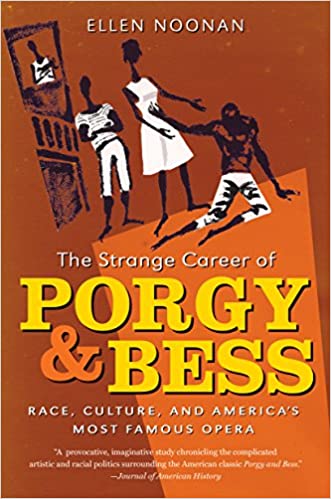
In regards to theatre, artists of color are slightly better represented, but the theatre works that feature us most prominently are not immune to controversy. Porgy and Bess, written in 1935 by George Gershwin, Ira Gershwin, and Dubose Heyward, was the first opera to feature a predominantly black cast. Since its premiere in 1934, the opera has been performed and recorded numerous times and has been the springboard for many successful singers of color, including Audra McDonald and Norm Lewis. Yet, neither the composers nor authors of the opera were black; they were white men who knew little of African American culture, and even the most culturally sensitive productions of Porgy and Bess rely heavily on black stereotypes, putting actors of color in uncomfortable performance situations. When I took voice lessons in my undergraduate years, one of my peers in my voice class expressed reservations about singing “Summertime” in studio class because of her issues with how black culture is represented in the opera overall.[3] This tension between the black community and Porgy and Bess is longstanding; during the 1960s civil rights movement, the black community openly dismissed the opera, with social critic Harold Cruse calling it “the most incongruous, contradictory cultural symbol ever created in the Western World.”[4] In the world of musical theatre, representation for artists of color has hit similar hurdles. Lin-Manuel Miranda’s 2015 musical Hamilton featuring actors of color portraying America’s founding fathers, won numerous awards, was widely praised and hailed as an instant classic, and catapulted both its creative team and cast into stardom. However, Hamilton is not without its faults. Ishmael Reed, a well- regarded novelist and playwright in the African American community, has heavily criticized Hamilton, especially regarding the decision to have actors of color portray former slaveholders. He even wrote an entire play entitled The Haunting of Lin-Manuel Miranda that criticizes the concept of the musical.[5] Thus, even when a work of art that prominently features artists of color is praised and lauded by audiences and critics, we still have to grapple with that success, as it comes at the expense of historical accuracy and cultural sensitivity. To bring it back to the issue of representation, when there are so few works of art that prominently feature artists of color, the works that do exist hold a disproportionate responsibility to the communities that they profess to represent. This is why it is crucial that productions of these works analyze their impact and message through a critical lens, so that the artistic representations of people of color do not perpetuate problematic understandings.
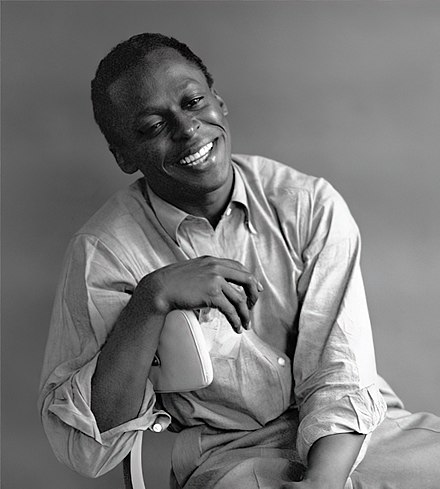
Miles Davis, American Trumpeter 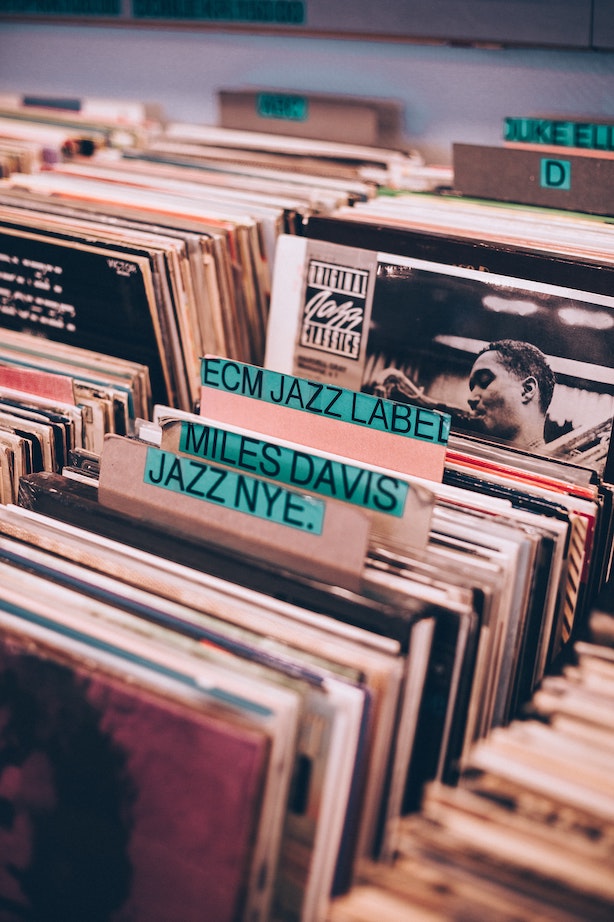
Photo by Florencia Viadana on Unsplash 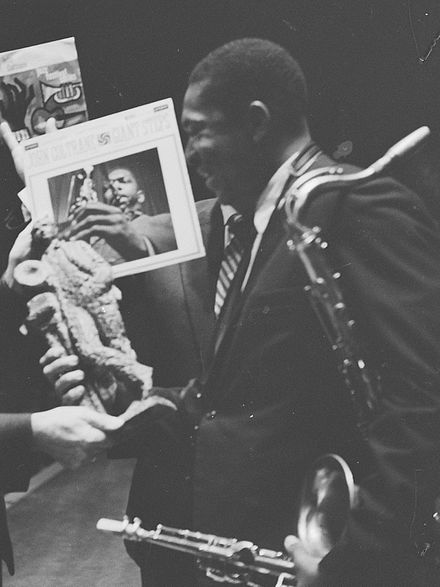
John Coltrane, American Saxophonist
Moreover, an abundance of representation does not necessarily mitigate these issues either. Musical fields in which artists of color are far more prominent, as in jazz, gospel, or hip-hop, have long struggled to reach mainstream respect and appreciation. Jazz in particular, receives limited and reserved academic attention, and I strongly believe it is due to its history as a black art form. For example, iconic jazz composers Miles Davis and John Coltrane are recognized as having as much musical knowledge and imagination as Mozart and Beethoven, but academia rarely ever treats them as such. Jazz concerts rarely receive the audience of more popular genres, and many who attend such concerts still view jazz as primarily background or atmospheric music. Of course, there are plenty of talented white jazz performers and composers, but I can’t help but think that the lack of attention paid to jazz music stems from its historical association with black culture. When I started my composition studies at Georgia State, I was surprised to learn that jazz classes were not required for composition majors; in fact, they were sometimes actively discouraged. I have taken four jazz classes since I’ve been at GSU, and I’ve learned easily as much in them as I have in my Western art music theory courses. Similarly, composition students are also required to attend a certain number of concerts every semester, but they must be “contemporary classical” concerts; jazz concerts won’t count for the assignment. Jazz is such an engaging and contemporary music style; it makes no sense for those concerts not to count as a legitimate subject for a concert report. What message does this bias send to young composers seeking to learn more about the genre? Acclaimed Jazz singer Nina Simone is often quoted as saying “Jazz is black classical music.” I understand that sentiment, but I can’t help but think that it perpetuates the tendency to define the legitimacy of a black art form in white terms.
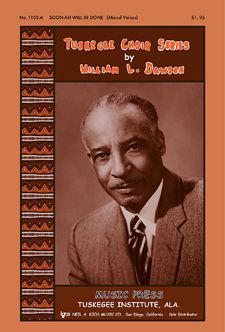
The appropriation of gospel music is another example of a black art form needing to be commodified and accepted through the terms of white culture. Gospel songs and negro spirituals have become very popular among professional, college, and high school choirs; I genuinely cannot remember the last time I attended a choral concert in which a spiritual wasn’t performed. But this crossover appeal is bittersweet. As wonderful as it is to see white choral singers and directors embrace our heritage through spirituals and gospel arrangements, I wonder if they are fully aware of the historical context of what they are singing. When a spiritual or gospel arrangement gets an enthusiastic response at a choral concert, I wonder if those same audience members would attend concerts entirely of spirituals, performed entirely by black artists. When a predominantly white choir performs music written by and for black Americans, I wonder if that is inherently cultural appropriation. Acclaimed choral composer and conductor Rollo Dilworth responds to that question thus: “Cultural appropriation can be acceptable as long as there isn’t theft, i.e., – someone taking elements of a culture without permission or regard for the context behind the culture.”[6] An example that comes to mind is when my university choir sang the spiritual “Soon Ah will be Done.” Several black students mentioned to our director that they were fine with performing the piece but wanted to have a wider discussion of the history of slavery and spirituals in addition to the standard rehearsal. The director responded that “Soon Ah will be Done” has been performed by choirs for decades, implying that no further discussion was necessary because the history of collegiate choral music superseded the history of slavery and negro spirituals. The power dynamic at play when white choirs sing music derived from how their ancestors enslaved black Americans should never be ignored or brushed aside.
Of the traditionally black art forms, hip-hop probably suffers the most bias. Albums from the likes of Kendrick Lamar, Outkast, A Tribe Called Quest, and numerous others have proven again and again the artistic merit of hip-hop, yet to this day there remain pundits who don’t even consider hip-hop “music.” The occasionally sexist, misogynistic, and violent content of hip-hop is given much more scrutiny than when those same themes appear in pop, rock, or country music. Two examples of this dichotomy, that also intersect with gender, are the reception of two hit songs in the last few years: “Shape of You” by Ed Sheeran and “WAP” by Cardi B and Megan thee Stallion. “WAP” is a very explicit depiction of the sexual fantasies of the two lead artists, both women of color. The song was very commercially and critically successful, yet it received a strong backlash from conservative media. “Shape of You” features sexual lyrics such as “My bed sheets smell like you” and “Put that body on me,” sung by a white man, and received no cultural backlash during its twelve-week run as the number one song in the country.[7]
At the Grammy awards, widely regarded as one of the highest achievements in recorded music, we see this bias against hip-hop and R&B play out in real time. Black artists are routinely underrepresented in the general field categories. John Vilanova, a professor at Lehigh University, makes an excellent breakdown of nearly every instance that black artists and black music have been underrepresented at the Grammys.[8] A hip-hop artist has not won Album of the Year since OutKast in 2004, even though hip-hop is the dominant genre in US, both commercially and critically. Let’s take a look at three of the arguably most successful black artists of the 21st century: Beyoncé, Jay-Z, and Kanye West. They have each won multiple Grammys over their long careers; Beyoncé has won 28, Jay-Z 23, and Kanye West 22. Yet nearly all of those wins are in genre-specific categories. None of these three artists have won album or record of the year, even when Beyoncé won song of the year for “Single Ladies” in 2010. It is almost as if the Grammys want to reward these artists, but not more than, or even equal to, the well-loved white artists.
This leaves black musicians, singers, and composers in a catch-22. When we work in traditionally white genres such as classical music, opera, or musical theatre, we usually stick out in an overwhelmingly white environment. And when we work in traditionally black genres and environments, such as jazz, gospel, or hip-hop, our contributions are either scrutinized, ignored, or appropriated. I personally have struggled with imposter syndrome because, though I have deep respect for jazz and hip-hop, I’ve always been more drawn to musical theatre and classical music. These same difficulties apply to Hispanic, Asian, and other communities of artists whose art is ignored, appropriated, and otherized. As POC, our identity is something that we can neither hide nor fully express; this constant source of tension makes it difficult for us to fully engage in the music we create and perform.
That said, I’ve been fortunate to work with and know multiple white artists who are conscious and aware of these issues. I have had numerous friends, teachers, and peers who have assured me that my grievances are valid, and I have been made to feel like I truly belong in my current musical community. Many of my peers make every effort to program works by composers of color and to feature soloists of color. Rather than lean into performative virtue signaling, they are willing to have productive conversations that address many of these issues in appropriate and sensitive ways. For every racist, prejudiced, and violent white person in the United States, there have been thousands and thousands of white artists who have championed the works of POC, and the success of works like Porgy and Bess and Hamilton, and of artists like Jessye Norman or Audra McDonald, is evidence of this. If you are an artist of color reading this, know that your voice and experience is of value. Express your heritage as often and as vividly as you see fit, but don’t hesitate to express yourself in mediums outside of your history. Whether you want to create classical, jazz, or hip-hop music, your voice deserves to be heard and amplified, not restricted and diminished because of your identity. If you’re a white artist wondering what you can do to combat the injustice around the black community, continue to support and patron the work of POC. Take time to really think critically about your views, your beliefs, your biases, and where they come from. There is no ceiling to what you can learn and understand about other cultures and viewpoints. Your understanding and empathy during these times is something our community has never, and will never, take for granted.

[1] Huizenga, Tom. “Why Is American Classical Music so White?” NPR. NPR, September 20, 2019. https://www.npr.org/sections/deceptivecadence/2019/09/20/762514169/why-is-american-classical- music-so-white.
[2] Ross, Alex. “Black Scholars Confront White Supremacy in Classical Music.” The New Yorker, September 11, 2020. https://www.newyorker.com/magazine/2020/09/21/black-scholars-confront-white-supremacy-in-classical-music.
[3] Unfortunately, in many parts of the libretto, the choice of African American slang and dialogue portrayed the characters as lazy or even apathetic about their circumstances.
[4] Standifer, James. “The Complicated Life of Porgy and Bess.” Humanities, Nov/Dec 1997. https://web.archive.org/web/20050211025941/https://www.neh.gov/news/humanities/1997-11/porgy.html.
[5] Arjini, Nawal. “Ishmael Reed Tries to Undo the Damage ‘Hamilton’ Has Wrought.” The Nation, June 6, 2019. https://www.thenation.com/article/archive/ishmael-reed-haunting-of-lin-manuel-miranda-hamilton-play-review/. Reed: “If these actors of color knew what George Washington and Thomas Jefferson actually did to their slaves, they would not be caught dead in these roles.”
[6] Pidcock, More byRick. “Is There a Balm in Singing the Spirituals, and If so, Who Should Sing Them?” Baptist News Global, August 11, 2021. https://baptistnews.com/article/is-there-a-balm-in-singing-the-spirituals-and-if-so-who-should-sing-them/#.YZ0qpL3MLDK.
[7] “WAP” (2020) by Cardi B ft. Megan Thee Stallion. “Shape of You” (2017) by Ed Sheeran from the album Divide.
[8] Owens, Cassie. “Do the Grammys Have a Diversity Problem? How Gender, Race Played out over 60 Years of Award History.” https://www.inquirer.com. The Philadelphia Inquirer, June 16, 2021. https://www.inquirer.com/entertainment/inq2/grammys-2020-awards-nominees-predictions-history-lizzo-billie-eilish-20200124.html.







